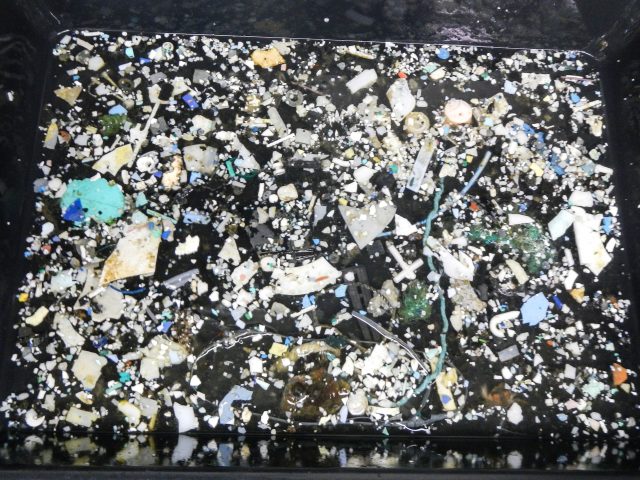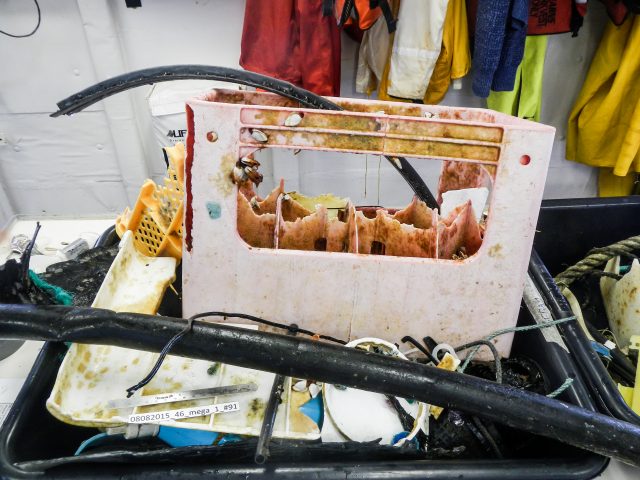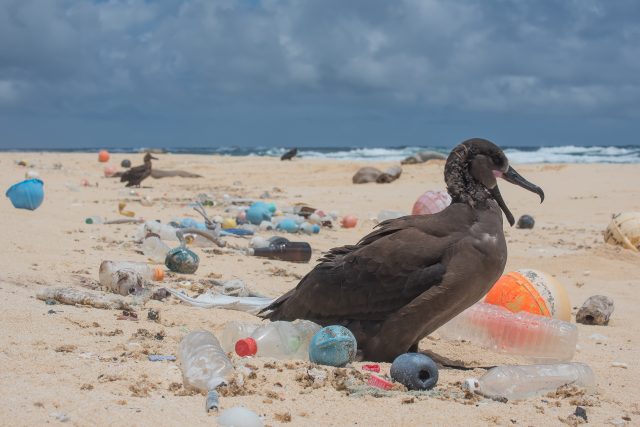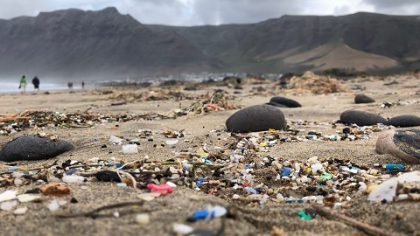Plastics in the ocean garbage patches is persistent, according to new study nearly half the plastics in the Great Pacific Garbage Patch is from the 1990s and older. Projections show the mass of ocean plastics could quadruple by mid-century, if not intervened. Even if plastic stops entering the ocean, microplastic contamination will double due to the fragmentation of legacy pollution. You will read the report from its source.
For the last five years, researchers at the Ocean Cleanup have been working to understand the scope of ocean plastic pollution in order to help the organization effectively design technology to solve this problem. In 2018, we reported that 80,000 metric tons of plastic were currently floating in the Great Pacific Garbage Patch, a figure four to sixteen times larger than previously estimated. We explained this increase by using robust methods to quantify the myriad of size classes composing plastic pollution, ranging from huge ghost nets to miniscule microplastics.
Extrapolated at a global scale using numerical models, we projected several hundred thousand metric tons currently floating at the ocean surface. Although these figures are alarming, they conflict with current global estimates of plastic inputs into the ocean (Jambeck 2015, Lebreton 2017), which predict several million metric tons enter the oceans every year. With plastic use swiftly rising in recent decades, we should be finding dozens of million metric tons of plastic on the ocean surface by now. But, we don’t. Which leads us to ask: where is the ‘missing plastic’?
The Plastic SMOG Hypothesis
The commonly accepted understanding is that floating plastic pollution doesn’t persist at the surface; rather, it is assumed its ultimate fate could be at the bottom of the ocean. The idea is that, just like a smog cloud over a city, the small particles descend into deeper waters as they break down (Eriksen, et al. 2016). According to the smog hypothesis, if we were to stop plastic inputs into the ocean today, the majority of floating plastic debris would degrade and settle below the ocean surface layer, in less than a few years (Koelmans 2017).
The idea that plastic rapidly disperses like smog raises more contradictions, however. In the field, we still find perfectly intact Japanese objects, likely originating back from the 2011 tsunami. But, mostly, the plastic we bring back from our expeditions and cleanup test operations appears very old as well. Some plastic has been dated back to the 1970s, clearly making it difficult to accept that the majority of HDPE fragments we collect were perfectly intact plastic objects only a few years ago.

We know that the primary mechanism for plastic degradation is photo-oxidation. This occurs when plastic is in contact with oxygen and bombarded by photons. Yet, plastic floating in the oceans is mostly submerged, so it rarely encounters those conditions. In fact, plastic is better conserved when submerged in seawater rather than exposed to the open air (Andrady 2011).
To resolve these contradictions and quantify the smog of plastic, we chose to sample in deeper waters. We performed this sampling in the Great Pacific Garbage Patch by deploying sediment traps for twelve months below the surface. Later this year, we will retrieve these traps, which should provide further insights into potential fallout mechanisms in this region.
In the meantime, we went back to our desks and continued questioning the ocean plastic smog hypothesis. Using evidence collected in the field and numerical models for the dispersion of floating ocean plastic, we propose an alternative explanation for the missing plastic. This new theory on the fate of floating plastic objects has been presented to the rest of the scientific community in the manuscript “A global mass budget for positively buoyant macroplastic debris in the ocean,” which was published today in the journal Scientific Reports.
Plastic Archeology
It is extremely difficult to date ocean plastics with the available knowledge; there is no technology that will identify how long plastic has been floating in the ocean. The best way we found to estimate the age of plastic objects is to look at clues on the debris, such as labels, production dates, and organisms that have grown on floating objects.


Since we began exploring the North Pacific Ocean and collecting debris with our trawls, we have systematically documented this type of evidence on collected ocean plastics.
Of the 83,144 plastics pieces collected from the Mega Expedition larger than 0.5 cm, we identified fifty production dates labeled on plastic debris. Half of the debris with recognizable production dates were produced in the 70s, 80s, and 90s – making our oldest identified sample more than forty years old.
Having this understanding, we must then reconcile two seemingly paradoxical findings:
- The large difference between mass inputs and accumulated mass in subtropical gyres, suggesting rapid removal, and
- the significant occurrence of decades-old objects in these waters.
By creating a simple box model, we were able to predict the age of plastic populations in the marine environment. We found that, in order to satisfy the two conditions, the cause of the ‘missing plastic’ must affect the plastic prior to it reaching offshore waters. Subsequently, this points to coastal environments playing a major role in capturing and filtering ocean plastic debris.

Our model simulations show that a large portion of plastic emitted from rivers likely returns to shore not long after being released. Beached plastic may be collected by humans or left to fragment in the coastal environment. Other accumulated beached plastics will be picked up by the waves and sent back to shore with the tide, possibly repeating this cycle numerous times over the years. A small fraction of the plastic that is retrieved by the waves and currents eventually escapes into the offshore environment.
These beaching cycles, which may be repeated for an unknown frequency depending on the distance of rivers to oceanic gyres, result in a significant delay between plastic release and representative accumulation offshore. Our model results suggest this delay could be in the order of several years to several decades. We argue that the missing floating plastic has not disappeared into a smog of invisible particles at the bottom of the sea, but rather is slowly degrading as it beaches or recirculates from coastal environments, eventually making its way to offshore waters.
This explanation has important implications as it suggests that (1) the persistence of ocean plastic pollution in offshore surface waters is much larger than previously anticipated (see supplement Modelling the age of ocean plastic populations), and (2) the trillions of microplastic fragments currently polluting offshore waters is mostly representative of the fragmentation of objects produced and discarded decades ago.
Please read more from the SOURCE
The last article about Ocean Cleanup published at this channel was: Ocean Cleanup System 001 Is Assembled For Higher Speed












